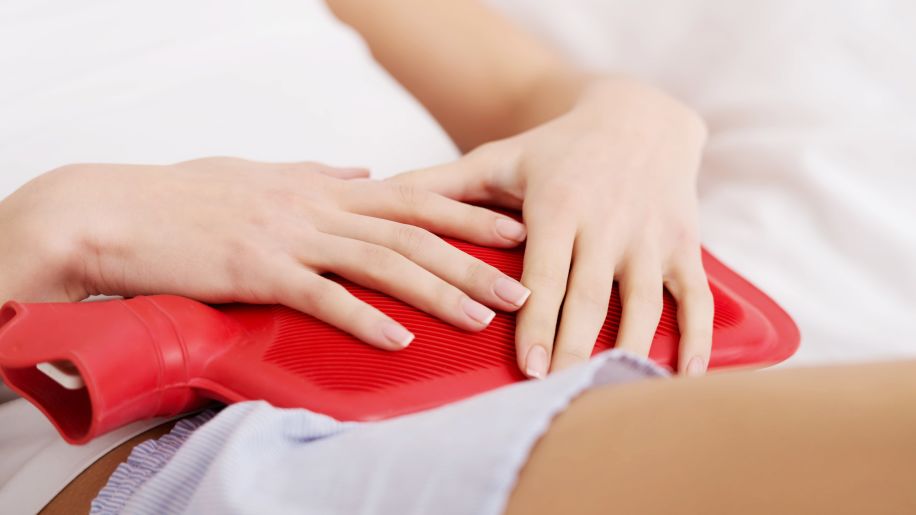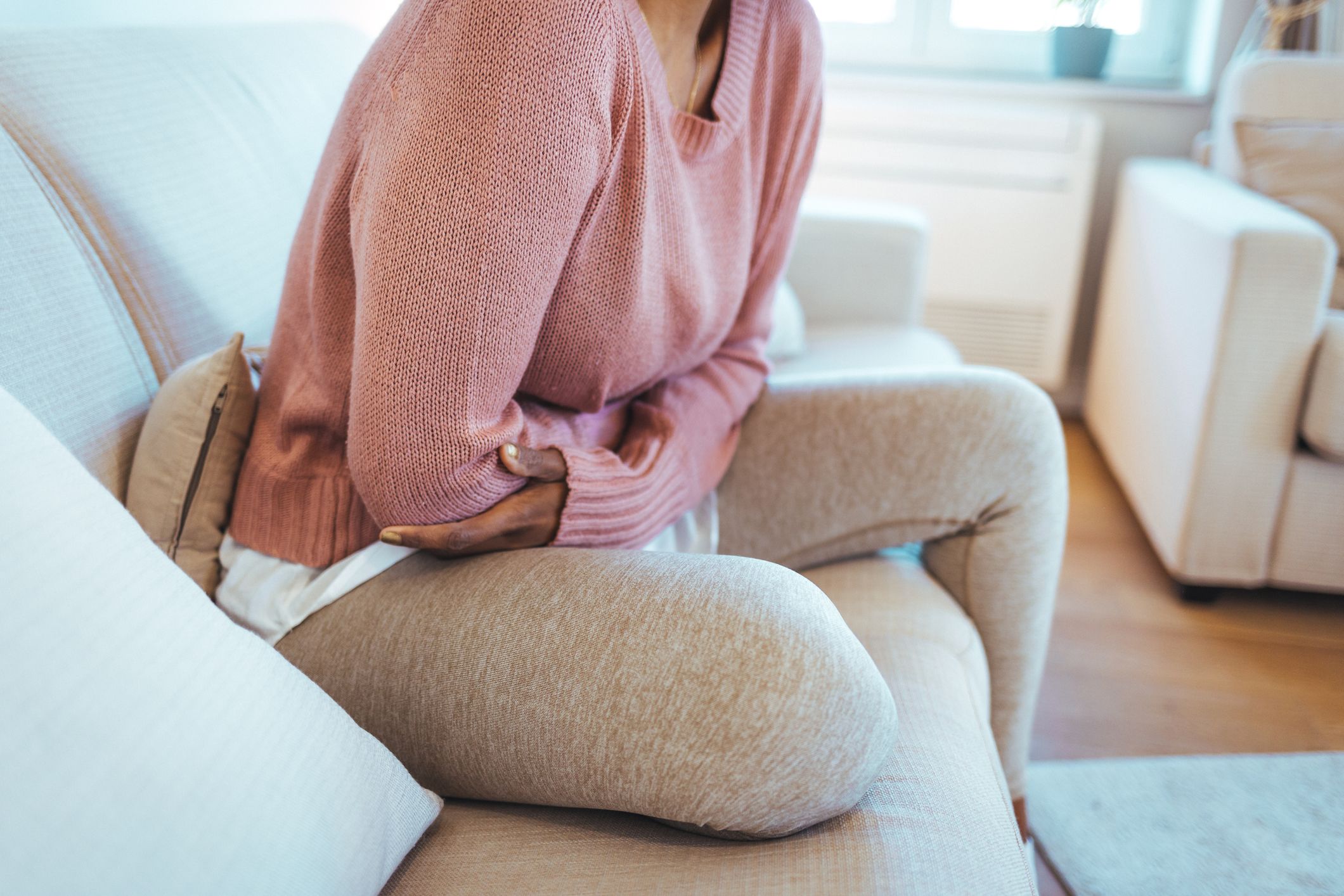Severe period signs you shouldn’t ignore
Bleeding and cramping are typical, but these signs may mean it's time to see a provider.
Updated on August 18, 2023

Periods are a natural part of the biological monthly cycle for those with a uterus, and period signs like bloating and cramps can be typical for many people. But when these signs become intense or start to interfere with daily life, it could be time to see your healthcare provider (HCP).
Here are three severe period signs to watch for, possible health conditions that they… Show More
Periods are a natural part of the biological monthly cycle for those with a uterus, and period signs like bloating and cramps can be typical for many people. But when these signs become intense or start to interfere with daily life, it could be time to see your healthcare provider (HCP).
Here are three severe period signs to watch for, possible health conditions that they could indicate, and how your HCP may go about checking for them.
Show Less
What a typical period should look and feel like
Period signs can vary from month to month and from person to person. As you go through different stages of your life, your periods may also change. So how do you know what’s typical and what’s not?
Your periods should be predictable, but they may not occur at the same time every month, says… Show More
Period signs can vary from month to month and from person to person. As you go through different stages of your life, your periods may also change. So how do you know what’s typical and what’s not?
Your periods should be predictable, but they may not occur at the same time every month, says Jennifer Wilson, MD, an OB/GYN at Platte Valley Medical Group in Brighton, Colorado.
“Teenagers often have irregular periods as their reproductive system matures," she says. “People of childbearing age should have predictable, regular menses, while those in their 40s may experience menstrual changes as their ovaries prepare for menopause, which usually occurs around age 51.”
Occasionally, an irregular period may signify an underlying health issue, such as fibroids, polyps, or polycystic ovary syndrome (PCOS, a hormonal condition that causes many cysts to form in the ovaries and may increase the risk for other health conditions like high blood pressure and type 2 diabetes). Things like genetics, weight, and stress levels can all affect your period, too.
Typically, periods last from 2 to 7 days, and will usually be spaced 21 to 35 days apart. Cramps, bloating, and changes in bowel habits are often experienced during this time.
Dr. Wilson recommends keeping track of your period: its length (dates when bleeding starts and ends), your symptoms, and any mood swings. If period signs are preventing you from doing your regular daily activities, safe and effective therapies are available for many issues, according to Wilson.
Show Less
Symptom #1: spotting between periods
Usually, bleeding lasts for up to eight days during menstruation. What’s not typical is to see blood in your panties or on toilet tissue between periods.
On one hand, spotting between periods could be a sign you're experiencing an irregular menstrual cycle. On the other hand, it could indicate a… Show More
Usually, bleeding lasts for up to eight days during menstruation. What’s not typical is to see blood in your panties or on toilet tissue between periods.
On one hand, spotting between periods could be a sign you're experiencing an irregular menstrual cycle. On the other hand, it could indicate a miscarriage, uterine fibroids—usually noncancerous tumors or growths that develop in the uterine wall—or cervical polyps, which can grow on the lower section of the uterus. In rare cases, spotting or irregular bleeding can be a sign of uterine cancer.
Based on your age and symptoms, your HCP may recommend one or more of the following tests to determine the source of the bleeding:
- Ultrasound
- Hysteroscopy (a thin, telescope-like device that is inserted through the vagina into your uterus, in order to take images of the inside lining of the uterus)
- Endometrial biopsy
- Magnetic resonance imaging (MRI)
- Computer tomography (CT)
Depending on the underlying cause of spotting, treatment may involve medication, surgical procedures, or some combination of the two.
Show Less
Symptom #2: Heavy bleeding
Menstrual bleeding is considered heavy when it:
- Lasts longer than seven days
- Soaks through one or more pads or tampons every hour for several consecutive hours
- Requires more than one pad or tampon at a time, or requires changing pads or tampons in the middle of the night
- Is accompanied by blood … Show More
Menstrual bleeding is considered heavy when it:
- Lasts longer than seven days
- Soaks through one or more pads or tampons every hour for several consecutive hours
- Requires more than one pad or tampon at a time, or requires changing pads or tampons in the middle of the night
- Is accompanied by blood clots that are quarter-sized or larger
Heavy periods could be a sign of a range of different health conditions, and may be caused by having more than one condition at the same time. These include:
- Noncancerous growths like uterine fibroids and cervical polyps
- Hormonal conditions such as PCOS, thyroid issues, obesity, and insulin resistance
- Endometriosis, when cells that line the inside of the uterus grow outside the uterus
- Uterine adenomyosis, a condition in which the tissue that lines the inside of uterus grows into the muscular wall of the uterus
- Certain medications, including aspirin, blood thinners, and some types of birth control
- Intrauterine devices (IUDs), particularly in the first year after insertion
- Bleeding disorders
- Pregnancy complications, such as miscarriage or ectopic pregnancy (when the embryo implants outside the uterus, most often in a fallopian tube)
Heavy bleeding may also be an early sign of endometrial cancer, which is most often diagnosed in people in their mid-sixties who have already entered menopause. Treatment is most effective when uterine cancer is diagnosed early.
Blood loss from heavy menstrual bleeding can result in iron deficiency anemia, a health condition that means your blood doesn’t carry enough oxygen through your body.
Talk with your HCP if you're bleeding heavily. A pelvic exam, ultrasound, hysteroscopy, or biopsy can help determine whether an underlying health condition is causing the bleeding. Hormonal treatments may help improve symptoms for some causes of heavy bleeding, such as fibroids, endometriosis, PCOS, or ovulation irregularities.
Show Less
Abdominal pain and cramps
Abdominal pain or cramping often accompanies menstruation. But very painful periods, otherwise known as dysmenorrhea, may be a sign of an underlying health condition.
Primary dysmenorrhea refers to typical menstrual pain caused by an increase in activity by the uterus-produced hormone prostaglandin.… Show More
Abdominal pain or cramping often accompanies menstruation. But very painful periods, otherwise known as dysmenorrhea, may be a sign of an underlying health condition.
Primary dysmenorrhea refers to typical menstrual pain caused by an increase in activity by the uterus-produced hormone prostaglandin. Signs of dysmenorrhea include pain in the abdomen, back, or thighs, especially during the first one or two days of your period. As bleeding continues, the lining of your uterus sheds and the pain usually decreases.
Secondary dysmenorrhea is menstrual pain caused by health conditions like endometriosis, fibroids, and adenomyosis. It could also be a sign of pelvic inflammatory disease (PID), an infection of the uterus that can extend to other reproductive organs. Secondary dysmenorrhea may cause menstrual pain in your hips, low back, inner thighs, and abdomen even before your period starts. Most of the time, it gets worse as your period continues, and may not go away after your period ends.
In addition to these symptoms, see your HCP if your period is more than a week late, or if you have sudden, extreme pain along with foul-smelling vaginal discharge or fever. Pain that occurs before your period or comes after your period has ended is also a sign you need to visit an HCP.
Your provider will do a pelvic exam and ask about your menstrual cycle and symptoms. They may also recommend an ultrasound or other imaging that can take a picture of the inside of your pelvis. Sometimes, a laparoscopy is needed (a minimally invasive surgical procedure used to take images of the inside of the abdomen or pelvis). Treatment depends on whether or not there are underlying health issues, but anti-inflammatory medications, certain birth control methods, and lifestyle and diet changes can help relieve cramping.
Show Less
Office on Women’s Health. Premenstrual syndrome (PMS). February 22, 2021. Accessed July 13, 2022.
American College of Obstetricians and Gynecologists. Your First Period: FAQ. November 2021. Accessed July 13, 2022.
Mayo Clinic. Women’s health: Menstrual cycle: What's normal, what's not. April 29, 2021. Accessed July 13, 2022.
Office on Women’s Health. Menstrual Cycle. February 22, 2021. Accessed July 13, 2022.
Office on Women’s Health. Uterine fibroids. February 19, 2021. Accessed July 13, 2022.
MedlinePlus. Cervical polyps. January 27, 2020. Accessed July 13, 2022.
American College of Obstetricians and Gynecologists. Abnormal Uterine Bleeding. June 2021. Accessed July 13, 2022.
American College of Obstetricians and Gynecologists. Heavy Menstrual Bleeding. Last accessed June 2022.
Mayo Clinic. Adenomyosis. June 18, 2022.
American College of Obstetricians and Gynecologists. Polycystic Ovary Syndrome (PCOS). July 2021.
Office on Women’s Health. Polycystic ovary syndrome. February 22, 2021. Accessed July 13, 2022.
MedlinePlus. Anemia. July 29, 2016. Accessed July 13, 2022.
Mayo Clinic. Endometriosis. July 24, 2018. Accessed July 13, 2022.
MedlinePlus. Painful menstrual periods. March 31, 2020. Accessed July 13, 2022.
Cleveland Clinic. Dysmenorrhea. November 20, 2020. Accessed July 13, 2022.
American College of Obstetricians and Gynecologists. Dysmenorrhea: Painful Periods. January 2022. Accessed July 13, 2022.
NIH: Eunice Kennedy Shriver National Institute of Child Health and Human Development. Uterine Fibroids. November 2, 2018. Accessed July 15, 2022.
Yara G. Alkilani & Irasema Apodaca-Ramos. Cervical Polyps. StatPearls Publishing. 2022.
Centers for Disease Control and Prevention. Bleeding Disorders in Women: Heavy Menstrual Bleeding. December 20, 2017.
Mayo Clinic. Menorrhagia (heavy menstrual bleeding). June 25, 2022.
NIH: Eunice Kennedy Shriver National Institute of Child Health and Human Development. What are the treatments for endometriosis? November 2, 2018. Accessed July 15, 2022.
Hassan Nagy & Moien AB Khan. Dysmenorrhea. StatPearls Publishing. 2022.
Johns Hopkins Medicine. Polycystic Ovarian Syndrome (PCOS). Last accessed April 4, 2023.
ACOG. Hysteroscopy. Last reviewed November 2021
Featured Content

article

slideshow

article

article
